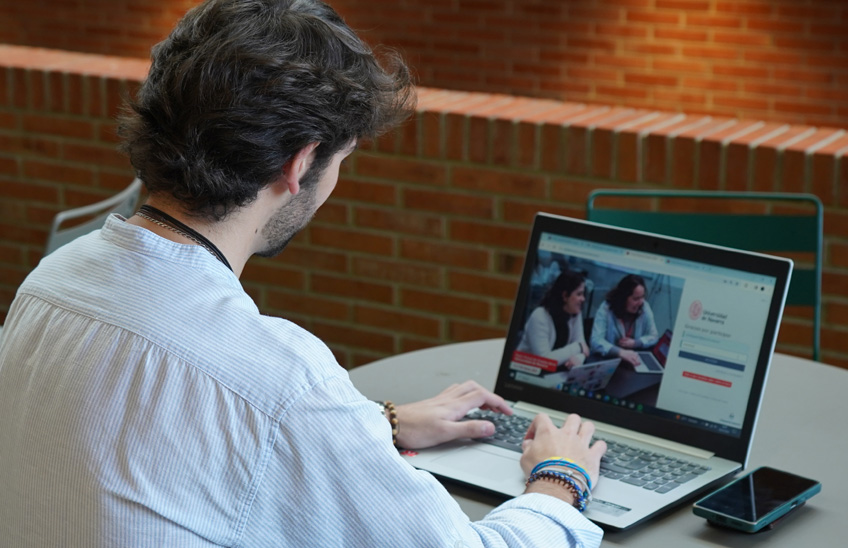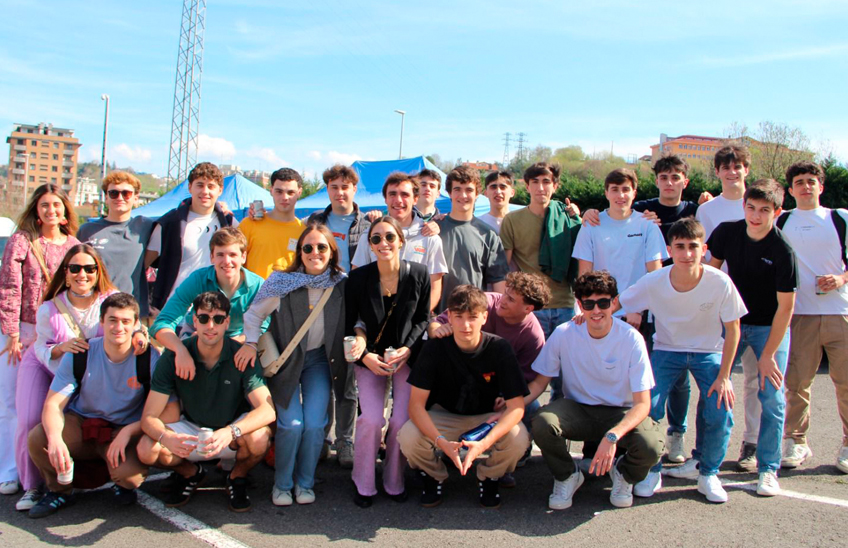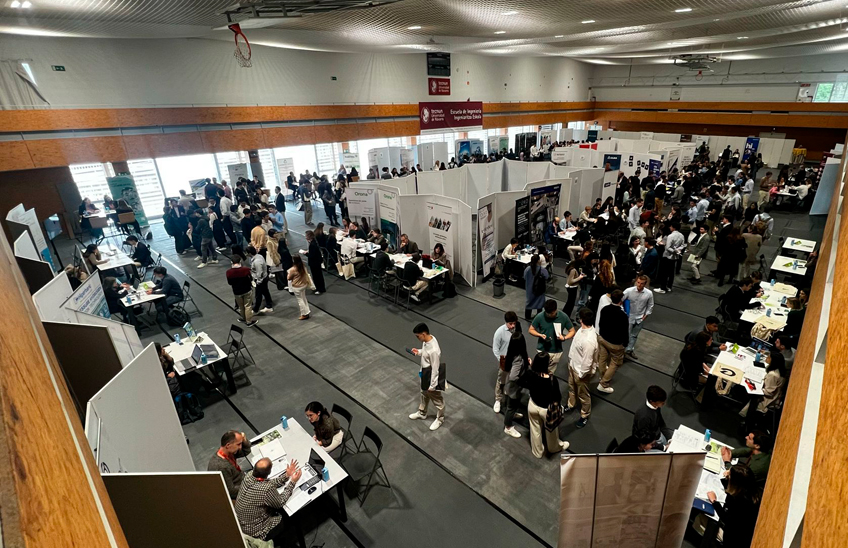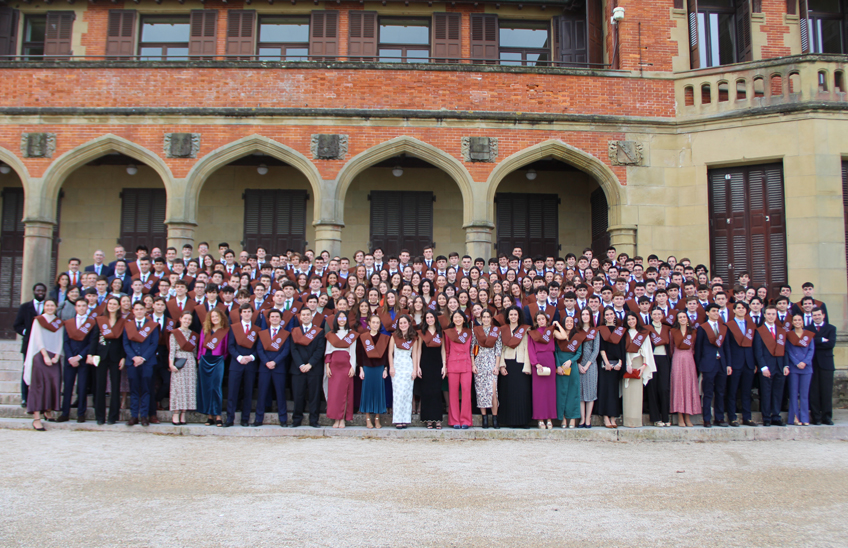2022_12_11mit_tecnun
Bruno Sunsundegi, student of Master's Degree in Telecommunication Engineering: "Seeing those antennas at NASA was impressive".
The students of Master's Degree in Telecommunication Engineering visit the NASA station in Madrid, the M3 tunnels and the Mediaset-Telecinco facilities.
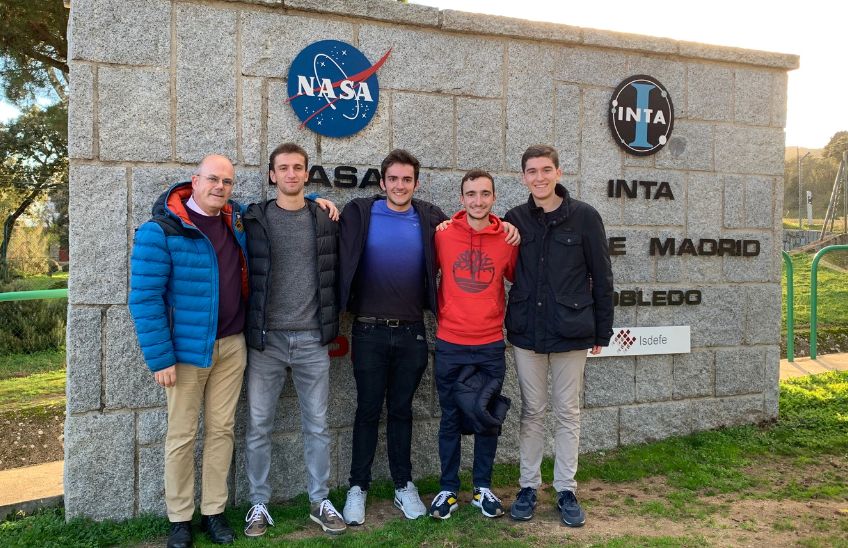
FotoCedida/Alumnosdel Master's Degree en Ingeniería de Telecomunicación junto al profesor Joaquín de Nó en la instalación que NASA tiene en Madrid
02 | 12 | 2022
Every year, the students of Master's Degree of campus in San Sebastian complement their training with an intensive week of visits to companies in Madrid. The tour allows them to visit the work of large companies, which is, in the words of Bruno Sunsundegi, student of Master's Degree in Telecommunications Engineering, "impressive, because you see how what you study at class materializes every day. The trip began at IESE, where students from the master's programs in Artificial Intelligence, Biomedical Engineering and Telecommunications worked together on different cases. Afterwards, they received a session on management project techniques at position from business VASS, where they worked on aspects of agile methodologies using Lego.
The last two days of the trip were focused on specific visits to each Master's Degree.
Students of Master's Degree in Telecommunication Engineering visit the facility that @NASA_es has in Madrid, the business Calle30 and @mediasetcom. "Seeing those antennas at NASA has been awe-inspiring," relates a student. https://t.co/qtf4mPCIxq pic.twitter.com/XnOngIDnQm
- Tecnun (@tecnun) December 2, 2022
La business Calle30: first stop for the students of Master's Degree in Telecommunication Engineering.
Joaquín de Nó, professor at Master's Degree in Telecommunications Engineering, explains how educational it is for students to visit the company that manages the operation, conservation and maintenance of the Calle 30 ring road in Madrid, as well as the infrastructures and spaces around it: "The business Calle 30 has seven major junctions and more than fifty kilometers of tunnels, a work that cannot be compared to that of other European capitals". The electronic and telematic control systems are particularly important for this operation: more than a thousand cameras and hundreds of sensors from all over subject ensure the safety of the more than 30 million vehicles that use these facilities every month. "The tunnels were 70 meters deep - impressive," exclaims Bruno Sunsundegi, student of Master's Degree.
visit a Madrid Deep Space Communications Complex: NASA's Madrid facility
"They explained to us which subject missions they control from the NASA facility near Madrid," says student at Master's Degree. This facility, together with those in Canberra (Australia) and Goldstone (USA), make up its network for Deep Space Communications. The center currently has six antennas of different diameters equipped to track space vehicles and probes and is the largest and most sensitive communications system in the world.
The students were able to visit several antennas at the center, including the 70-meter-diameter antenna. "Seeing those antennas is awe-inspiring. You see how big they've been able to take what you study at class," says student. "You're used to seeing antennas on buildings, and to come across the biggest one of them all is amazing. On top of that, one of them was under repair, the technicians were up in the satellite dish area and it is so big that next to it they looked like little dolls. It was amazing," he reiterates.
The Nó professor adds that "it is classified as one of the most precise machines ever built by mankind".
They also visited the data center and the conference room mission tracking station, including mission statement Artemis I, which was launched on November 16. "The launch tracking was performed from this NASA station and the goal of this mission statement is to fly over the moon with the Orion capsule to obtain accurate information for future manned missions", reveals de Nó.
Mediaset-Tele5: end of tour
The trip culminated with a visit tour of Mediaset' s facilities , where they had the opportunity to walk through the entire path of the television audio and video signal.
They also learned about the latest generation programs of study in full production and operation, the broadcasting of live programs, as well as the work of essay digital news. All this, as a training complement to subject Audiovisual Communication Systems in which students simulate at scale the production of a live television program.


